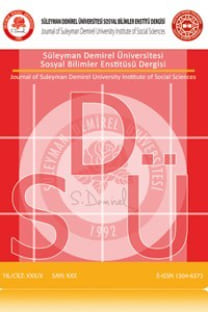ÇEVRİMİÇİ BİREYSEL ÇALIŞMA WEB SİTELERİNİN ÜNİVERSİTE HAZIRLIK SINIFI ÖĞRENCİLERİ ÜZERİNDEKİ ETKİLERİ
Bireysel çalışma ve özerklik, yabancı diller eğitimi de dahil olmak üzere, her bir disiplinde eğitim alan öğrenciler için sahip olunması ve geliştirilmesi gereken önemli becerilerdir. Bu gerçeğe paralel olarak, neredeyse tüm modern ders kitaplarının paket içeriğine çevrimiçi uygulama etkinlikleri dahil edilmektedir. Bazı öğrenciler bu fırsatı en iyi biçimde kullanırken, diğer bazı öğrenciler ise bu olanağı göz ardı etmektedir. Bu bireysel çalışma web sitelerinin çoğu, kullanıcılara dört dil yeteneğinde (dinleme, konuşma, okuma ve yazma) ve dilbilgisi, kelime bilgisi ve telaffuz gibi alanlarda pratik yapma olanağı sağlamaktadır. Dahası, bu uygulamalar çoğunlukla sınıf öğretmeninin öğrencileri kontrol etmesi, düzeltmesi ve öğrencilerin tamamladığı öğeleri geri alabilmesi açısından çift yönlü etkileşim sağlamaktadır. İngilizce seviyelerini geliştirmek için cep telefonlarını ve kişisel bilgisayarlarını sıklıkla kullanan genç öğrenciler için, bireysel çalışma web siteleri motive edici ve dikkat çekici özellikler taşımaktadır. Bu çalışma, bu bireysel çalışma web sitelerinin, bir devlet üniversitesindeki hazırlık sınıfı öğrencileri için yabancı dili olarak İngilizce öğrenmelerini ne ölçüde desteklediğini ortaya çıkarmayı amaçlamaktadır. Bireysel çalışma web sitesini kullanan ve kullanmayan öğrencilerin ara sınavlar ve haftalık olarak yapılan sürpriz sınavlarda aldıkları notları karşılaştırılmış ve öğrencilerin çevrimiçi bireysel çalışma programlarına yönelik tutumlarını belirlemek amacıyla bir anket yapılmıştır. Bu çalışma içerisinde, yapılan karşılaştırma ve anketin sonuçları ele alınarak tartışılmıştır.
Anahtar Kelimeler:
Çevrimiçi Öğrenme, Bilgisayar Destekli Dil Eğitimi (BDDE), Bireysel Çalışma Yetenekleri, Öğrenci Özerkliği
THE EFFECTS OF ONLINE SELF-STUDY WEBSITES ON PREPARATORY CLASS UNIVERSITY STUDENTS
Self-study and autonomy are important skills that should be possessed and improved for the learners of all subjects including foreign languages. In line with this fact, almost all modern course-books are accompanied by online practice activities that are included in the pack. Some students do not miss this opportunity while some others ignore it. Most of these self-study websites provide the users with practice in four skills (i.e. listening, speaking, reading and writing) as well as language areas such as grammar, vocabulary and pronunciation. Moreover, these exercises are mostly interactive in that the classroom teacher can check, correct and send back the items the students have completed. For young learners of English who often use their mobile phones and personal computers to improve their English, self-study websites are motivating and attention gripping facilities. This study aims to investigate to what extent these self-study websites promote learning English as a foreign language for preparatory class students at a state university in Turkey. The grades of the students who use and do not use the website for self-study in their mid-term exams and pop-quizzes are compared and a questionnaire as to their attitudes towards the online self-study programs is conducted. The results of the questionnaire and the comparison are discussed within the study.
Keywords:
Online Learning, Computer Assisted Language Learning (CALL), Self-study Skills, Learner Autonomy,
___
- Balçıkanlı, C. (2012). L2 Students’ Comments on Language Exchange Communities in Language Learning. The Journal of Language and Linguistic Studies, 8 (1), 7-23. Beatty, K. (2003). Teaching and Researching Computer-Assisted Language Learning. Pearson Education Limited. Brown, D. H. (2007). Principles of Language Learning and Teaching. (5th ed.) Pearson Education. Canning, J. (2004). Disability and Residence Abroad. Subject Centre for Languages, Linguistics and Area Studies Good Practice Guide. Retrieved on 7/9/2014, from http://www.llas.ac.uk/resources/gpg/2241. Carrier, M. (1997). ELT online: the rise of the Internet. ELT Journal, Volume 51/3, Oxford University Press. Chapelle, C. A. (2005). Computer-Assisted Language Learning. in Hinkel, E. (Editor) Handbook of Research in Second Language Teaching and Learning. Lawrence Erlbaum Associates. Chapelle, C. A. (2008). Computer-Assisted Language Learning. in Spolsky, B. & Hult, F. M. (Editors) The Handbook of Educational Linguistics. Blackwell Publishing Ltd. Figura, K. & Jarvis, H. (2007) Computer-based Materials: A Study of Learner Autonomy and Strategies. Science Direct. System 35, 448–468. Gündüz, N. (2005). Computer Assisted Language Learning. Journal of Language and Linguistic Studies, 1(2), 193-214. Holec, H. (1981). Autonomy in Foreign Language Learning. Oxford: Pergamon. Jones, J. (2001). CALL and the Teacher's Role in Promoting Learner Autonomy. CALL-EJ Online. 3 (1). (http://callej.org/journal/3-1/jones.html) Larsen-Freeman, D. & Anderson, M. (2011). Techniques & Principles in Language Teaching. (3rd ed.) OUP. Lynch, R. & Dembo, M. (2004). The Relationship between Self-Regulation and Online Learning in a Blended Learning Context. International Review of Research in Open and Distance Learning, 5 (2). McMurry, B, L., Tanner, M. W., & Anderson, N. J. (2010). Self-Access Centers: Maximizing Learners’ Access to Center Resources. Studies in Self-Access Learning Journal, 1(2), 100-114. Nielson, K. B. (2011). Self-study with language learning software in the workplace: what happens? Language Learning & Technology. 15(3), 110–129. Nunan, D. (2000). Autonomy in language learning. Plenary presentation given at the ASOCOPI 2000 conference, Cartengena, Columbia. Reinders, H. (2010) Towards a Classroom Pedagogy for Learner Autonomy: A Framework of Independent Language Learning Skills. Australian Journal of Teacher Education, 35(5). Available at: http://ro.ecu.edu.au/ajte/vol35/iss5/4 Rüschoff, B. & Ritter, M. (2001). Technology-Enhanced Language Learning: Construction of Knowledge and Template-Based Learning in the Foreign Language Classroom. Computer Assisted Language Learning, 14(3-4), 219-232. Sokolik, M. (2001). Computers in Language Teaching. in Celce-Murcia, M. (Editor). Teaching English as a Second or Foreign Language (3rd edition). Heinle & Heinle. White, C. (2003). Language Learning in Distance Education. CUP.
- Yayın Aralığı: Yılda 3 Sayı
- Başlangıç: 2005
- Yayıncı: Süleyman Demirel Üniversitesi
Sayıdaki Diğer Makaleler
MÜELLİFİ BİLİNMEYEN BİR KIRK HADİS TERCÜMESİ
HASTANELERİN TARİHSEL GELİŞİMİ
FİNANSAL GELİŞME ENERJİ TÜKETİMİNİ DESTEKLER Mİ?
Abdullah Emre ÇAĞLAR, Yeşim KUBAR
ISPARTA İLİ DIŞ TİCARETİNİN YEREL TİCARİ AKTÖRLER GÖZÜYLE BETİMSEL VE SİSTEMATİK ANALİZİ
ULUSLARARASI İLİŞKİLERDE TEORİK TARTIŞMALARIN YÖNTEME ETKİSİ
ULUSLARARASI ETİK VE ZYGMUNT BAUMAN
TEKNOLOJİ KULLANIMININ YAZMA BECERİSİNE YANSIMALARINA İLİŞKİN ÖĞRETMEN GÖRÜŞLERİ
Ayşegül BÜYÜKKARCI, Merve MÜLDÜR
TÜRKİYE’DE GENÇ NÜFUS: SORUNLAR VE POLİTİKALAR
Asıllarla İstidlâl’in Klasik Hanefî Usûl Düşüncesindeki Yeri
